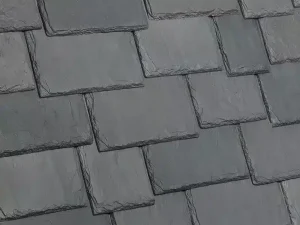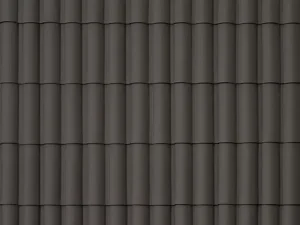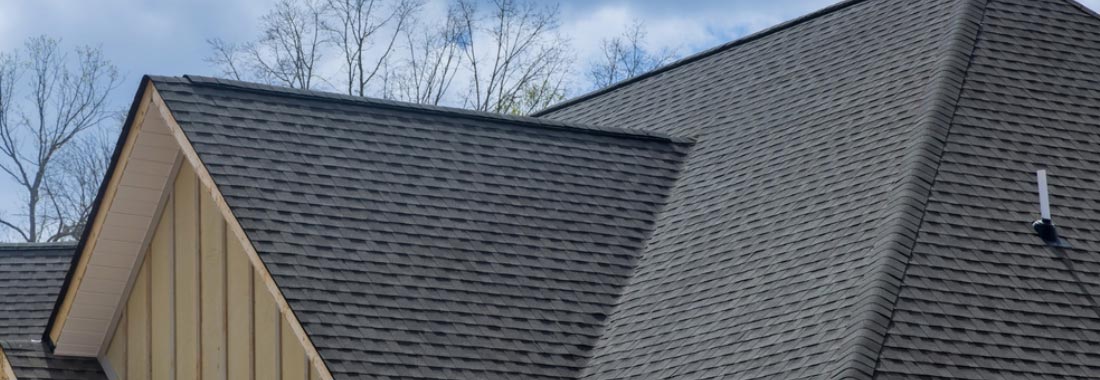How Long Does a Roof Typically Last?
A roof typically lasts around 30 years. However, the lifespan of a roof can vary depending on the types of roofing material used, the weather conditions and climate in your area, and how well the roof is maintained. For example, areas with high sun exposure can deteriorate quickly, high winds can cause shingle and tile roofs to break of dislodge and areas with a heavy tree presence can create problematic debris if not regularly maintained. Let’s take a closer look at the average lifespan of various roofing options.
Asphalt Shingle Roofs
Asphalt shingles are one of the most popular roofing materials in the U.S. But how long does a new roof last when it’s made of asphalt shingles? On average, an asphalt shingle roof can last 20 to 30 years. However, factors like proper ventilation, the quality of the shingles, and the installation process can affect this range. Regular inspections and roof repair can also help extend the life of an asphalt shingle roof.

Metal Roofing
Metal roofing is known for its durability and longevity. If you’re asking, “How long does a roof on a house last when it’s made of metal?”—you’ll be happy to know that metal roofs can last 40 to 70 years, depending on the material used. Metal roofs are also resistant to water damage and wear and tear, making them a great option for homeowners looking for a long-lasting roof.

Slate Roofing
Slate tiles are some of the most durable roofing materials available. A slate roof can last 75 to 100 years or even longer with proper maintenance. While slate roofing is more expensive upfront, its longevity and timeless appearance make it a worthwhile investment. However, due to the weight of slate roofing, it’s important to ensure that your home’s structure can support it.

Concrete Tile Roofs
Concrete tile roofs are another durable option, with a lifespan ranging from 50 to 100 years. Concrete tiles are resistant to fire and weather conditions, making them a good choice for areas with harsh climates.
However, like slate, concrete tiles are heavy, so the roof structure must be able to support the weight. Regular maintenance is also important to help prevent moss and algae growth.

Flat Roofs
Flat roofs are common on modern homes and commercial buildings. But how long does a roof last on a house when it’s flat? Typically, flat roofs have a lifespan of 15 to 30 years, depending on the material used. Proper drainage and regular inspections are key to preventing water damage and extending the life of a flat roof.

Factors That Affect a Roof’s Lifespan
Several factors can influence how long your roof will last. Here are some key considerations:
- Weather Conditions: Extreme weather, such as high winds, heavy rain, or dust, can shorten a roof’s lifespan.
- Proper Maintenance: Regular inspections, cleaning of debris and gutters, and timely repairs can extend the life of your roof.
- Proper Ventilation: Ensuring your roof has adequate ventilation can prevent issues like moisture buildup and heat damage.
- Installation Quality: Hiring an experienced roofing contractor like LocalRoofs to install your roof can make a big difference in how long it lasts.
The Impact of Underlayment on a Roof’s Lifespan
Underlayment plays a crucial role in determining how long your roof will last. Acting as a protective barrier between your roof deck and the outer roofing material, underlayment helps prevent water infiltration, which can lead to leaks and structural damage over time. High-quality underlayment can significantly enhance your roof’s durability, particularly in areas prone to extreme weather conditions like heavy rain, dust, or high winds.
When selecting roofing materials, it’s essential to consider the type and quality of underlayment, as this can extend the overall lifespan of your roof and protect your home from potential damage.
Keep in mind that the average lifespan of roofing underlayment typically ranges from 20 to 30 years, depending on the material used. For roofs with high longevity, like concrete tile and slate, which can last 50 years or more, this means the underlayment may need to be replaced once or even twice during the roof’s lifetime. Ensuring the underlayment is properly maintained and replaced when necessary is crucial to protect the roof structure and maintain the long-term durability of these high-end roofing materials.
When to Consider Roof Replacement
Even with the best maintenance, every roof will eventually need to be replaced. If you notice signs of wear and tear, such as missing shingles, leaks, or sagging, it may be time to consider a roof replacement. A reputable roofing company can assess the condition of your roof and help you decide on the best course of action.
The Bottom Line: How Long Does a Roof Last?
So, how long does a new roof last? The answer depends on the types of roofing material, weather conditions, and how well it’s maintained. Whether you have an asphalt shingle roof, metal roofing, slate, tiles, or any other material, regular care and attention can help maximize your roof’s lifespan.
If you’re unsure about the condition of your roof, consulting with a professional roofing contractor like LocalRoofs to provide the guidance you need.
Schedule your FREE roof evaluation and estimate with LocalRoofs by calling us today!


